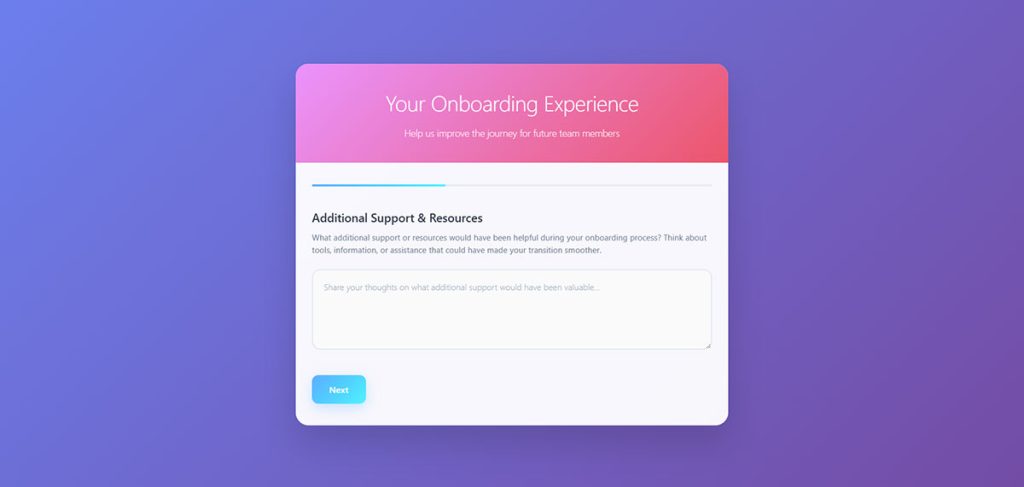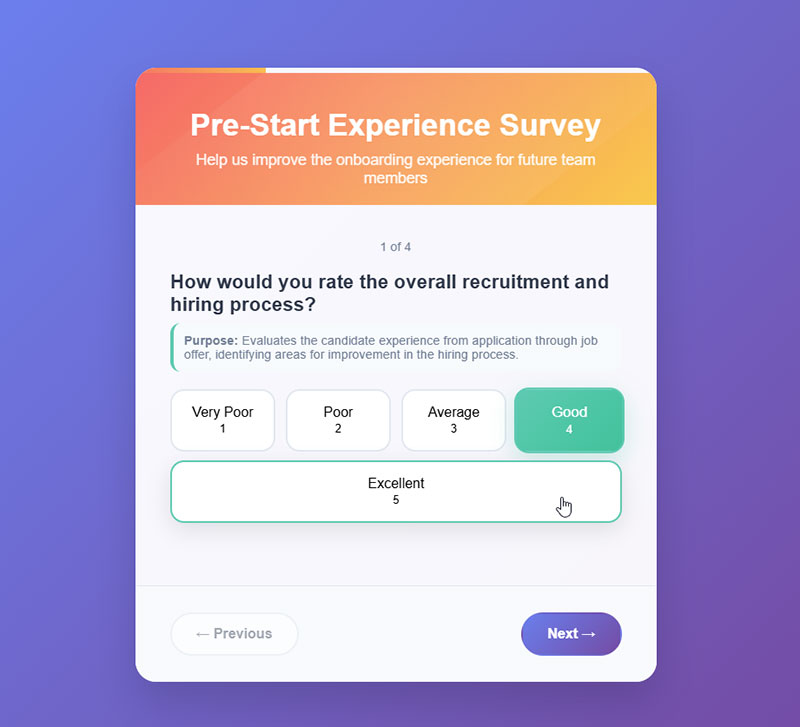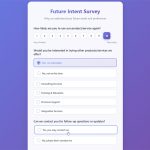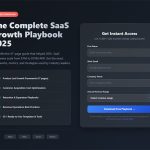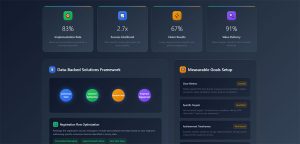You send a survey. Half your audience ignores it. The other half quits halfway through. Sound familiar? Survey fatigue is killing your response rates and destroying data quality. When participants…
Table of Contents
Your new hire just walked through the door. Will they stay past their first 90 days?
Getting onboarding survey questions right makes all the difference between a confident employee and one already browsing job boards. Companies with strong employee feedback processes during orientation see 82% better retention rates.
Yet most organizations still rely on generic checklists and outdated training effectiveness measures. They miss critical insights about workplace culture, team integration, and role clarity issues that drive talent away.
This guide breaks down the exact questions you need to capture meaningful first impressions and build better employee journeys. You’ll discover:
- Which questions reveal true engagement levels
- When to collect feedback for maximum impact
- How to turn responses into actionable improvements
- Templates for different onboarding stages
Transform your new employee experience from guesswork into a data-driven success story.
Onboarding Survey Questions
Pre-Start Experience
Recruitment Process Rating
Question: How would you rate the overall recruitment and hiring process?
Type: Multiple Choice (1–5 scale from “Very poor” to “Excellent”)
Purpose: Evaluates the candidate experience from application through job offer, identifying areas for improvement in the hiring process.
When to Ask: During the first week of onboarding, when the experience is still fresh in memory.
Role Clarity Communication
Question: Did you receive clear information about your role and responsibilities before starting?
Type: Multiple Choice (Yes/No) with optional comment field
Purpose: Assesses whether job descriptions and pre-start communications effectively set expectations and reduce first-day confusion.
When to Ask: End of first week, allowing time to compare expectations with reality.
Pre-boarding Preparation
Question: How well did the pre-boarding communications prepare you for your first day?
Type: Multiple Choice (1–5 scale from “Not at all prepared” to “Very well prepared”)
Purpose: Measures effectiveness of welcome emails, guides, and other materials sent before the start date.
When to Ask: After the first day or during the first week review.
Administrative Setup Efficiency
Question: Were all necessary paperwork and setup items completed efficiently?
Type: Multiple Choice (1–5 scale from “Very inefficient” to “Very efficient”)
Purpose: Identifies bottlenecks in HR processes, IT setup, and administrative tasks that could delay productivity.
When to Ask: End of first week, after most setup tasks should be completed.
First Day/Week Experience
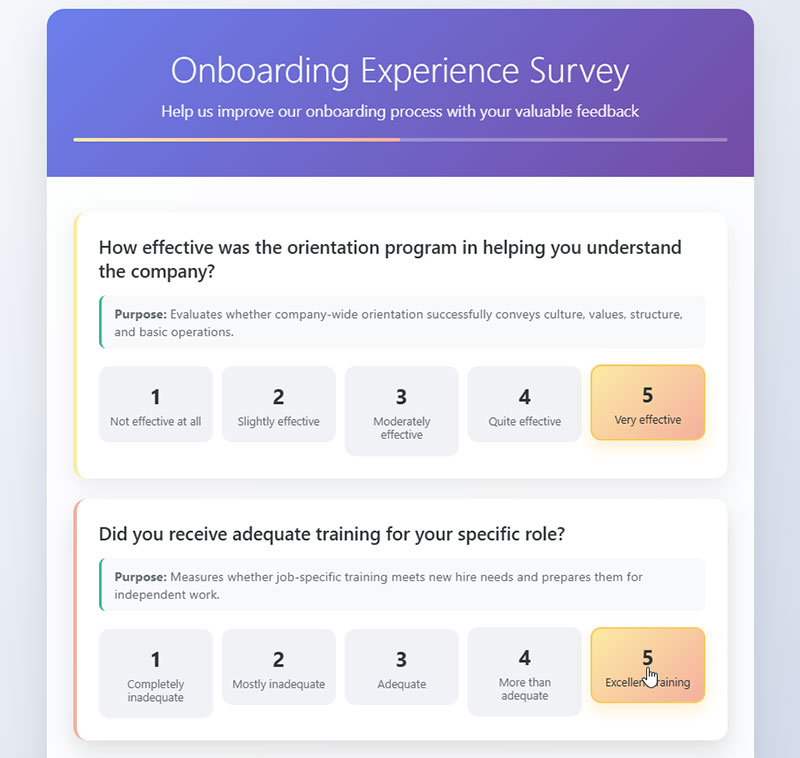
First Day Welcome
Question: How welcoming did you find your first day experience?
Type: Multiple Choice (1–5 scale from “Not welcoming at all” to “Extremely welcoming”)
Purpose: Measures the emotional and social aspects of the first impression, which significantly impacts retention and engagement.
When to Ask: End of first day or during first week check-in.
Team Introductions
Question: Did you receive a proper introduction to your team and key colleagues?
Type: Multiple Choice (Yes/No) with follow-up rating on quality if “Yes”
Purpose: Ensures new hires can quickly identify key contacts and begin building working relationships.
When to Ask: End of first week, allowing time for multiple introduction opportunities.
Workspace Readiness
Question: Was your workspace/equipment ready and functional on your first day?
Type: Multiple Choice (Yes/No) with comment field for issues encountered
Purpose: Identifies IT and facilities preparation gaps that can create frustration and delay productivity.
When to Ask: End of first day or when technical setup is expected to be complete.
Initial Instructions Clarity
Question: How clear were the initial instructions and expectations given to you?
Type: Multiple Choice (1–5 scale from “Very unclear” to “Very clear”)
Purpose: Assesses whether managers and team leads effectively communicate immediate priorities and tasks.
When to Ask: End of first week, after receiving various instructions from different sources.
Training and Resources
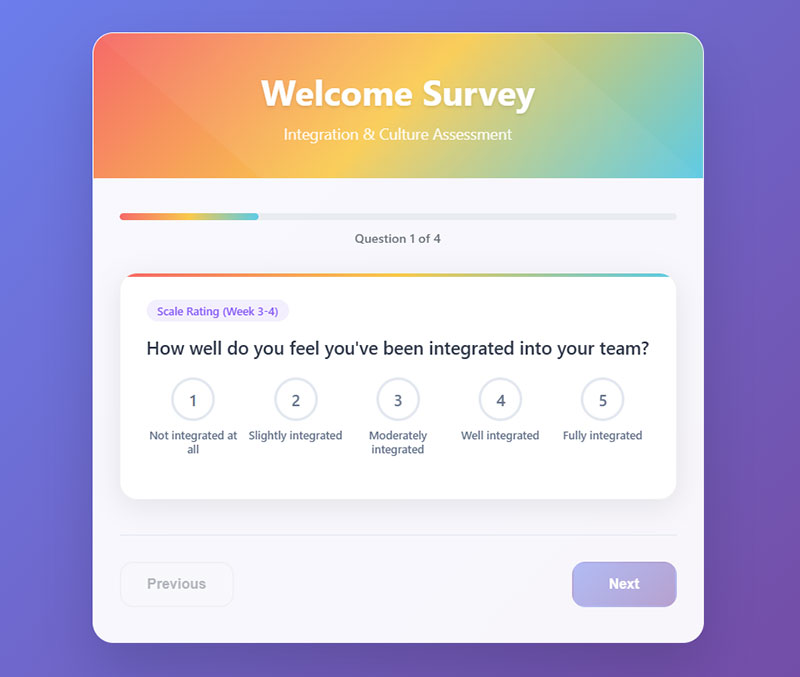
Orientation Program Effectiveness
Question: How effective was the orientation program in helping you understand the company?
Type: Multiple Choice (1–5 scale from “Not effective at all” to “Very effective”)
Purpose: Evaluates whether company-wide orientation successfully conveys culture, values, structure, and basic operations.
When to Ask: After completing formal orientation sessions, typically within first two weeks.
Role-Specific Training Quality
Question: Did you receive adequate training for your specific role?
Type: Multiple Choice (1–5 scale from “Completely inadequate” to “More than adequate”)
Purpose: Measures whether job-specific training meets new hire needs and prepares them for independent work.
When to Ask: 2-4 weeks after starting, when initial training period typically concludes.
Learning Materials Accessibility
Question: Were the learning materials and resources provided helpful and accessible?
Type: Multiple Choice (1–5 scale from “Not helpful/accessible” to “Very helpful/accessible”)
Purpose: Assesses quality and usability of documentation, training portals, and reference materials.
When to Ask: After 2-3 weeks, once new hires have had time to use various resources.
Manager Support Quality
Question: How well did your manager support you during the initial learning period?
Type: Multiple Choice (1–5 scale from “Very poor support” to “Excellent support”)
Purpose: Evaluates manager effectiveness in providing guidance, feedback, and assistance during transition.
When to Ask: End of first month, allowing sufficient interaction time for assessment.
Integration and Culture

Team Integration Success
Question: How well do you feel you’ve been integrated into your team?
Type: Multiple Choice (1–5 scale from “Not integrated at all” to “Fully integrated”)
Purpose: Measures social and professional integration, which affects collaboration and job satisfaction.
When to Ask: 3-4 weeks after starting, when team dynamics should be more established.
Company Culture Understanding
Question: Do you have a clear understanding of the company culture and values?
Type: Multiple Choice (Yes/No) with confidence rating if “Yes”
Purpose: Determines whether cultural messaging is effectively communicated and understood.
When to Ask: After 2-3 weeks, following exposure to various cultural touchpoints.
Support Network Identification
Question: Have you been able to identify who to go to for different types of questions or support?
Type: Multiple Choice (Yes/No) with request for examples if “No”
Purpose: Ensures new hires can navigate organizational structure and find appropriate help when needed.
When to Ask: End of second or third week, after encountering various question types.
Comfort Level for Questions
Question: How comfortable do you feel asking questions when you need help?
Type: Multiple Choice (1–5 scale from “Very uncomfortable” to “Very comfortable”)
Purpose: Assesses psychological safety and openness of team environment for learning and growth.
When to Ask: 2-3 weeks in, after multiple opportunities to ask questions have occurred.
Role Clarity and Expectations

Job Responsibility Understanding
Question: Do you have a clear understanding of your job responsibilities and priorities?
Type: Multiple Choice (1–5 scale from “Very unclear” to “Very clear”)
Purpose: Confirms whether role expectations are being effectively communicated and understood.
When to Ask: End of first month, after sufficient time to receive and process role information.
Performance Expectations Clarity
Question: Are your performance expectations and success metrics clearly defined?
Type: Multiple Choice (Yes/No) with comment field for clarification needs
Purpose: Ensures new hires understand how their success will be measured and evaluated.
When to Ask: 3-4 weeks after starting, ideally after initial goal-setting conversations.
Role Context Understanding
Question: Do you understand how your role fits into the broader team and company goals?
Type: Multiple Choice (1–5 scale from “Don’t understand at all” to “Understand completely”)
Purpose: Measures whether new hires see their purpose and contribution within the larger organization.
When to Ask: End of first month, after exposure to broader company context and strategy.
Career Development Awareness
Question: Have you received clear information about career development opportunities?
Type: Multiple Choice (Yes/No) with interest level rating
Purpose: Sets expectations for growth and demonstrates company investment in employee development.
When to Ask: 4-6 weeks after starting, once immediate role concerns are addressed.
Overall Satisfaction
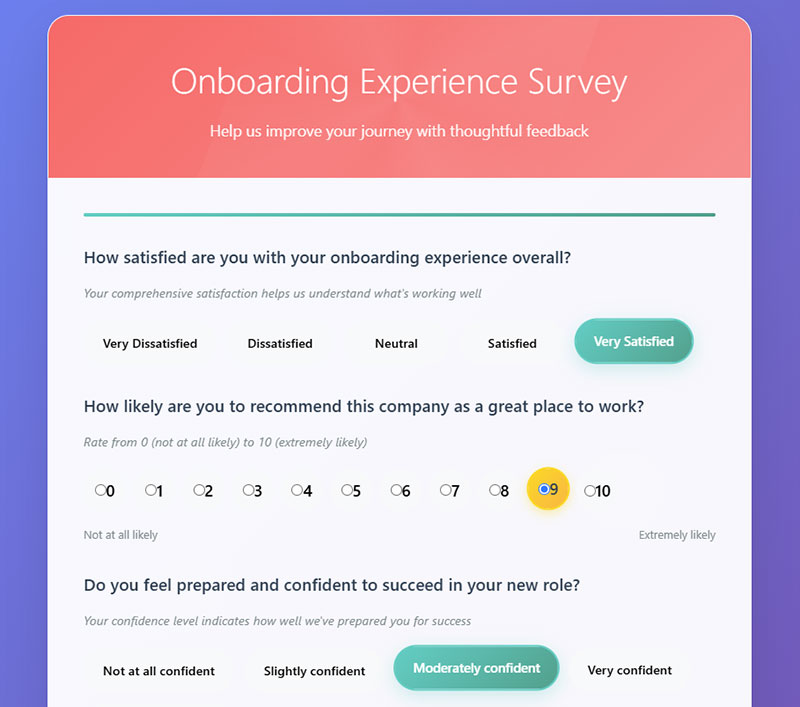
Overall Onboarding Rating
Question: How satisfied are you with your onboarding experience overall?
Type: Multiple Choice (1–5 scale from “Very dissatisfied” to “Very satisfied”)
Purpose: Provides a comprehensive satisfaction metric that correlates with retention and engagement.
When to Ask: End of formal onboarding period, typically 4-6 weeks after starting.
Most Valuable Aspects
Question: What aspects of the onboarding process were most valuable to you?
Type: Open-ended text response
Purpose: Identifies successful elements that should be maintained and potentially expanded.
When to Ask: Near end of onboarding period, when new hires can reflect on the entire experience.
Improvement Opportunities
Question: What could be improved about the onboarding experience?
Type: Open-ended text response
Purpose: Captures specific feedback for process improvements and addresses pain points.
When to Ask: End of onboarding period, ensuring honest feedback after relationship establishment.
Recommendation Likelihood
Question: How likely are you to recommend this company as a great place to work?
Type: Net Promoter Score (0-10 scale)
Purpose: Measures overall sentiment and potential for positive word-of-mouth recruitment.
When to Ask: 4-8 weeks after starting, once initial impressions have stabilized.
Role Preparation Confidence
Question: Do you feel prepared and confident to succeed in your new role?
Type: Multiple Choice (1–5 scale from “Not at all confident” to “Very confident”)
Purpose: Measures onboarding effectiveness in building competence and self-efficacy.
When to Ask: End of formal onboarding period, before transitioning to full independence.
Open-Ended Feedback
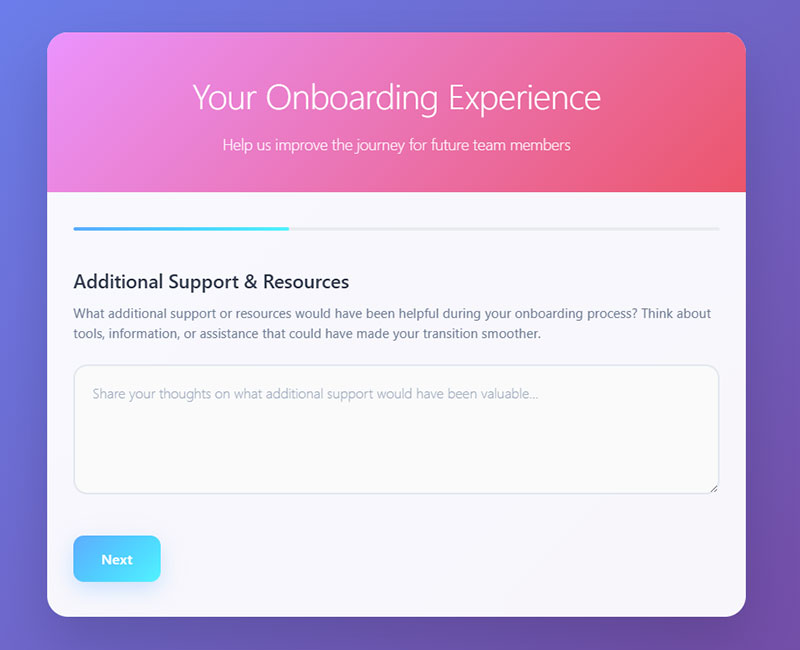
Additional Support Needs
Question: What additional support or resources would have been helpful during onboarding?
Type: Open-ended text response
Purpose: Identifies gaps in current support systems and opportunities for enhanced assistance.
When to Ask: End of onboarding period, when new hires have experienced various challenges.
Wish-I-Had-Known-Sooner
Question: Is there anything you wish you had known sooner about the company or role?
Type: Open-ended text response
Purpose: Reveals information gaps that could be addressed earlier in the process to reduce confusion.
When to Ask: 4-6 weeks after starting, when hindsight provides valuable perspective.
General Suggestions
Question: Any other comments or suggestions for improving the onboarding process?
Type: Open-ended text response
Purpose: Captures any remaining feedback not covered by specific questions and encourages comprehensive input.
When to Ask: Final survey question, allowing for any additional thoughts or concerns.
FAQ on Onboarding Survey Questions
What timing works best for onboarding surveys?
Deploy them at key milestones: end of day one, first week, 30 days, and 90 days. Each stage reveals different aspects of the new hire experience. Early surveys capture first impressions while later ones measure team integration and role clarity. This phased approach ensures comprehensive employee feedback throughout the critical transition period.
Should onboarding surveys be anonymous?
Yes, anonymous feedback forms yield more honest responses about workplace culture and manager support. New employees feel safer sharing concerns about training effectiveness or company values alignment. However, optional identification helps HR track individual employee journeys and provide targeted support when needed.
How many questions should onboarding surveys include?
Keep surveys to 10-15 questions max. Short survey forms boost completion rates and prevent survey fatigue. Focus on critical areas: role responsibilities, workplace readiness, and support systems. Mix various types of survey questions (multiple choice, rating scales, open-ended) to gather both quantitative and qualitative data.
What response rate should we expect?
Well-designed onboarding surveys typically achieve 75-85% completion rates. Strong manager support and clear communication about survey importance drive participation. Send reminders and emphasize how employee feedback directly improves the orientation process for future hires. Mobile-friendly form design also increases response rates significantly.
How can we improve low response rates?
Simplify your web forms and make sure mobile forms work perfectly. Send personalized invitations highlighting how responses shape workplace orientation. Reduce questions and use progressive disclosure. Consider incentives or making completion part of the official onboarding process checklist. Follow up individually with non-responders.
Which questions reveal cultural fit issues?
Ask about company mission alignment, team dynamics, and workplace expectations. Questions about communication preferences and collaboration tools usage expose potential mismatches. Probe feelings about organizational structure and professional relationships. These insights prevent early turnover by identifying cultural integration challenges before they escalate.
Should we use rating scales or open-ended questions?
Both serve unique purposes. Rating scales provide measurable performance metrics for tracking retention strategies. Open-ended questions uncover specific issues with resource availability or workplace tools. Balance quantitative data with qualitative insights. Use conditional logic to follow up low ratings with “why” questions.
How often should we update survey questions?
Review questions quarterly based on HR Analytics and employee lifecycle changes. Update language reflecting new workplace technology or company culture shifts. Remove outdated questions about discontinued programs. Add queries addressing emerging talent management priorities. Regular updates keep surveys relevant and engagement measurement accurate.
What’s the best survey platform for onboarding?
Choose platforms offering survey software with strong analytics, mobile compatibility, and integration capabilities. Popular options include BambooHR for HR-focused features, or specialized WordPress survey plugins for custom solutions. Use GDPR compliant forms and robust form security features protect employee data.
How should we act on survey feedback?
Create action plans within two weeks of survey completion. Share aggregated results with team management and highlight improvement areas. Implement quick wins immediately (fix IT access setup issues, clarify benefits enrollment). Schedule follow-ups to track progress. Close the feedback loop by communicating changes made based on new employee survey responses.
Conclusion
Effective onboarding survey questions transform your talent acquisition process from guesswork into strategic workforce planning. They reveal hidden gaps in organizational development and pinpoint exactly where new hires struggle with professional development or work-life balance.
The right questions unlock insights about:
- Employee success patterns across departments
- Critical knowledge transfer breakdowns
- Mentorship program effectiveness
- Career pathway clarity issues
Smart organizations use these insights to refine their People Operations continuously. They track employee engagement metrics, adjust corporate training modules, and strengthen learning management systems based on real feedback.
Remember: quality beats quantity. Ten targeted questions deliver more value than fifty generic ones. Focus on skill assessment, process improvement, and employee retention drivers that matter most.
Start small. Test your survey form templates with one department. Analyze results through your HR Technology stack. Then scale what works across the entire employee lifecycle.
Your next great hire’s success depends on the questions you ask today.


